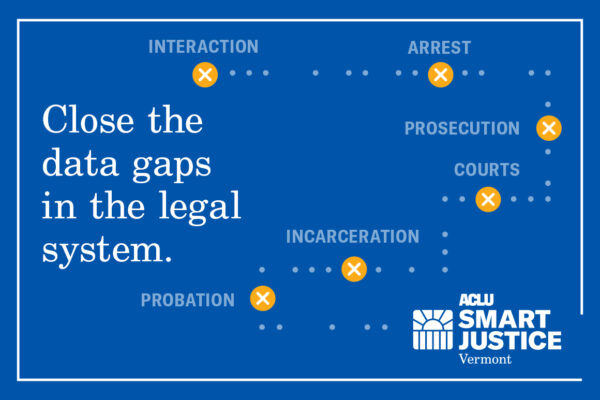Blueprint for Smart Justice
The Vermont Blueprint offers a list of policy options for continued reform efforts, including drug decriminalization, expanding alternatives to incarceration, investing in treatment for mental health and substance-use conditions, and reforms in Vermont’s bail, sentencing, and parole systems. The report’s findings include:
- Vermont’s prisons have some of the highest racial disparities in the country, the sources of which are obscured by a lack of criminal justice system data. Although Black people made up just 1 percent of the state’s adult population in 2017, they accounted for 8 percent of admissions to correctional facilities.
- Prison admissions for violations of probation, parole, and furlough are a key driver of mass incarceration in Vermont. In 2017, an estimated 2 out of every 3 prison admissions fell into this category.
- Many people in Vermont’s prisons are incarcerated past their minimum release date. As of September 2018, 704 people—63 percent of the sentenced population—were incarcerated beyond their minimum sentence, by an average of just over 2 years.
The report notes that, despite progress in recent years, Vermont is still working to undo decades of “tough on crime” policies. Between 1980 and 2009, the number of incarcerated Vermonters rose by 363 percent, reaching a peak of 2,220 people before a series of legislative reforms started to reverse the trend. The number of Vermonters in prison today is still double what it was 30 years ago.
It also highlights the lack of readily accessible criminal justice data in Vermont, and that this serves as a major barrier to addressing racial and geographic disparities. Out of 50 states surveyed, Vermont is the only one that did not provide sufficient data for Urban Institute researchers to conduct a predictive analysis of the impact various reforms would have on Vermont’s incarceration rate.
Read or download the full report below.

